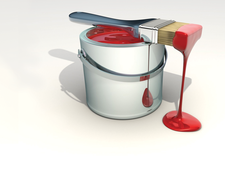Gimp and neural networks
Matching Paint Job

© Lead Image © Orlando Rosu, 123RF.com
Deep learning isn't just for industrial automation tasks. With a little help from Gimp and some special neural network tools, you can add color to your old black and white images.
Neural networks (NN) don't just play the traditional Japanese board game Go better than the best human player; they can also solve more practical tasks. For example, a project from Japan colors old black-and-white photos with the help of a neural network – and without asking the user to get involved with the image editing.
Researchers at Waseda University in Tokyo used a database that contains several objects to train a neural model to correctly recognize objects in images and fill them with appropriate color information. Using this model, the network then identifies the individual parts of the image, say, trees and people, and assigns matching colors.
The Waseda team presented this deep learning tool at the SIGGRAPH 2016 computer graphics conference [1]; you will find the code for their photo-coloring tool on Github [2]. The university website [3] provides a research paper on the subject [4], as well as some sample images.
[...]
Buy this article as PDF
(incl. VAT)
Buy Linux Magazine
Subscribe to our Linux Newsletters
Find Linux and Open Source Jobs
Subscribe to our ADMIN Newsletters
Support Our Work
Linux Magazine content is made possible with support from readers like you. Please consider contributing when you’ve found an article to be beneficial.

News
-
Parrot OS Switches to KDE Plasma Desktop
Yet another distro is making the move to the KDE Plasma desktop.
-
TUXEDO Announces Gemini 17
TUXEDO Computers has released the fourth generation of its Gemini laptop with plenty of updates.
-
Two New Distros Adopt Enlightenment
MX Moksha and AV Linux 25 join ranks with Bodhi Linux and embrace the Enlightenment desktop.
-
Solus Linux 4.8 Removes Python 2
Solus Linux 4.8 has been released with the latest Linux kernel, updated desktops, and a key removal.
-
Zorin OS 18 Hits over a Million Downloads
If you doubt Linux isn't gaining popularity, you only have to look at Zorin OS's download numbers.
-
TUXEDO Computers Scraps Snapdragon X1E-Based Laptop
Due to issues with a Snapdragon CPU, TUXEDO Computers has cancelled its plans to release a laptop based on this elite hardware.
-
Debian Unleashes Debian Libre Live
Debian Libre Live keeps your machine free of proprietary software.
-
Valve Announces Pending Release of Steam Machine
Shout it to the heavens: Steam Machine, powered by Linux, is set to arrive in 2026.
-
Happy Birthday, ADMIN Magazine!
ADMIN is celebrating its 15th anniversary with issue #90.
-
Another Linux Malware Discovered
Russian hackers use Hyper-V to hide malware within Linux virtual machines.

